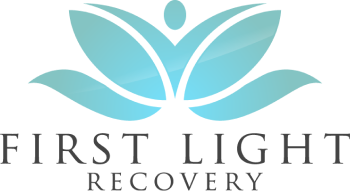Understanding Failure to Launch Syndrome
Failure to Launch Syndrome describes a situation where young adults struggle to transition into independent adulthood. This section will discuss its definition, characteristics, and contributing factors.
Definition and Characteristics
Failure to Launch Syndrome is a non-clinical term used to describe young adults who face significant difficulties in becoming self-sufficient and independent. According to California Prime Recovery, this syndrome is often exacerbated by mental health issues, substance abuse, or a lack of essential life skills. It is also known to be worsened by parental overinvolvement and societal pressures.
Signs and Symptoms
- Chronic unemployment
- Avoidance of responsibilities
- Low motivation for personal goals
- Emotional dependence on parents
- Poor coping skills
- Social withdrawal
- Substance use as a coping mechanism
These characteristics paint a comprehensive picture of why young adults might face difficulties in stepping into their own shoes.
Contributing Factors
Various factors contribute to the development of Failure to Launch Syndrome. Understanding these can help identify the need for residential therapy for failure to launch [1].
Mental Health Disorders
Conditions like anxiety, depression, and ADHD can impede a young adult’s ability to move forward. Such disorders often require specialized treatment which can be provided in a structured environment. Visit our residential therapy program for young men in Rancho Cucamonga for more information.
Substance Use
Substance abuse can stifle maturity and lead to a reliance on parents for support. Programs like our failure to launch residential program in Orange County can offer the targeted treatment needed.
Overprotective Parenting
An overprotective parenting style can prevent young adults from developing essential life skills. This “accommodation trap” can lead to dependence, decreased motivation, and heightened mental health issues [2].
Economic Pressure
The current economic climate can create a challenging environment for young adults trying to become independent. This can lead to a reliance on family or support systems for basic needs, as discussed in individualized treatment approaches for residential mental health services.
Lack of Life Skills
Without proper life skills, young adults struggle to take on adult responsibilities. Programs focused on life skills residential treatment in Anaheim address these issues directly.
| Contributing Factor | Description |
|---|---|
| Mental Health Disorders | Anxiety, depression, ADHD impede ability to progress |
| Substance Use | Stifles maturity, leads to reliance on parents |
| Overprotective Parenting | Prevents development of essential life skills |
| Economic Pressure | Creates a tough environment for independence |
| Lack of Life Skills | Hinders ability to take on responsibilities and adult tasks |
Understanding these contributing factors helps in recognizing the need for a specialized residential mental health treatment service, such as that offered by First Light Recovery. Visit our residential program with family integration in Orange County to learn more.
Importance of Residential Mental Health Treatment
Purpose and Benefits
Residential mental health treatment provides a comprehensive approach to addressing Failure to Launch Syndrome and other psychological challenges. This type of treatment offers several advantages for individuals requiring extended support and a structured environment.
Key Benefits:
- Comprehensive Care: Residential therapy emphasizes a holistic approach, encompassing mental, emotional, and social aspects of recovery. Clients engage in daily therapeutic sessions, including trauma therapy, cognitive-behavioral therapy, mindfulness training, and life skills coaching.
- Customized Treatment Plans: Programs are tailored to individual needs, allowing therapists to address specific issues and personal goals. This individualized care can lead to more effective outcomes and meaningful change.
- Extended Support: The ongoing nature of residential treatment ensures that clients have continuous access to therapeutic support, fostering stronger emotional resilience and practical skills for maintaining wellness post-discharge.
- Home-like Environment: Providing comfortable living quarters, communal spaces, and serene surroundings, residential rehab fosters a supportive and connected atmosphere. This nurturing environment is critical for long-term recovery and emotional well-being [3].
Comparison: Inpatient vs. Residential Rehab
Understanding the distinctions between inpatient and residential rehab is crucial when selecting the appropriate treatment for residential therapy for Failure to Launch in Riverside. Both offer structured environments but differ significantly in their approach, environment, and duration.
| Factor | Inpatient Rehab | Residential Rehab |
|---|---|---|
| Purpose | Symptom management and stabilization | Long-term recovery and personal development |
| Environment | Clinical, hospital-like | Home-like, comfortable |
| Treatment Duration | Short-term (median LOS of 4.5 days for adolescents) [4] | Long-term (weeks to months) |
| Therapy Focus | Limited, symptom-focused | Comprehensive, consistent therapeutic schedule [3] |
| Living Arrangements | Hospital rooms | Private or semi-private rooms |
| Support | Medical and psychiatric | Emotional, social, and practical skill-building |
Key Differences:
- Duration: Inpatient care typically focuses on short-term stabilization, which may include a median length of stay of around 4.5 days [4]. In contrast, residential treatment extends over weeks or months, providing continuous care and support.
- Environment: Inpatient facilities offer a clinical, hospital-like environment aimed at managing acute symptoms. On the other hand, residential programs provide a more home-like, comfortable setting, which can foster a sense of stability and community.
- Therapeutic Focus: Inpatient care prioritizes immediate symptom management, while residential rehab offers a consistent and comprehensive therapeutic schedule addressing deeper psychological issues and fostering life skills development [3].
Choosing the right type of treatment is crucial for achieving successful outcomes in mental health recovery. For those considering residential therapy, First Light Recovery provides industry-leading services tailored to your unique needs and long-term goals. For more information about the different programs and how they can benefit you, explore our resources on family dynamics residential program riverside and residential therapy for adult dependency santa ana.
Specialized Therapeutic Intervention Programs
Specialized therapeutic intervention programs provide a structured and supportive environment for individuals facing failure to launch syndrome. These programs are designed to address the underlying emotional and behavioral issues and help patients develop the skills needed for independent living.
Structure and Components
At First Light Recovery, the framework of the treatment program is meticulously designed to facilitate holistic healing. The structure encompasses several key components:
- Assessment and Diagnosis: A comprehensive evaluation is conducted to identify the specific needs and challenges of the individual. This includes diagnosing any co-occurring mental health or substance abuse issues [5].
- Personalized Treatment Plans: Based on the initial assessment, a detailed and individualized treatment plan is developed. This plan outlines the therapeutic goals and the specific interventions that will be employed to achieve them.
- Therapy Sessions: Patients participate in various forms of therapy, including individual, group, and family therapy. These sessions are crucial for addressing emotional and behavioral issues and promoting positive change.
- Life Skills Training: A core component of the program is the development of practical life skills. This can include time management, financial planning, job readiness, and interpersonal skills. Learn more about life skills training at our life skills residential treatment center in Anaheim.
- Educational and Vocational Support: Assistance with educational goals and vocational training is also provided, helping patients to prepare for future independence.
| Component | Description |
|---|---|
| Assessment and Diagnosis | Comprehensive evaluation to identify needs and challenges |
| Personalized Treatment | Customized plans outlining therapeutic goals |
| Therapy Sessions | Individual, group, and family therapy |
| Life Skills Training | Development of practical skills for independent living |
| Educational/Vocational | Support with educational and job readiness |
Individualized Treatment Approaches
Every individual is unique, and so it’s imperative to tailor the treatment approach to meet personal needs. Here are some specific treatment techniques employed:
- Cognitive Behavioral Therapy (CBT): This is a cornerstone of our therapeutic strategy, helping patients to identify and change negative thought patterns that affect their behavior and emotions.
- Dialectical Behavior Therapy (DBT): Particularly beneficial for individuals with severe emotional challenges, DBT focuses on teaching coping mechanisms and emotional regulation.
- Motivational Interviewing: This technique involves collaborative conversations that strengthen an individual’s motivation and commitment to change. It’s particularly effective in addressing resistance to therapy.
- Family Therapy: Engaging the family in the treatment process is crucial. By addressing family dynamics and patterns, we can create a supportive home environment that promotes recovery [2].
- Holistic Therapies: These may include mindfulness, yoga, art therapy, and other approaches that support mental and emotional well-being.
For individuals and families seeking the best residential therapy for failure to launch in Riverside, understanding the structure and individualized nature of these programs is critical. Engaging with comprehensive, tailored treatment plans can significantly enhance the chances of a successful transition to independent living. Learn more about our individualized programs at our residential program for life transition riverside.
Choosing the right residential treatment program is a significant decision. Taking into account the program structure and how it can be personalized to meet specific needs ensures that you or your loved one will receive the most effective care. Explore more about family-inclusive programs at our residential family therapy center in Orange County.
Choosing the Right Residential Treatment Program
Selecting the appropriate residential treatment program for failure to launch syndrome is critical to achieving successful outcomes. It involves a thorough assessment of individual needs and an understanding of how family involvement plays a vital role in the recovery process.
Assessing Individual Needs
Understanding the specific needs of the individual is the first step in choosing a residential treatment program. The Failure to Launch program at First Light Recovery is tailored to men between the ages of 25-35, focusing on overcoming anxiety, low motivation, and dependence. This CARF-accredited program provides evidence-based treatments including individual therapy, group sessions, life skills coaching, and family involvement. Participants receive 24/7 support in a safe environment, preparing them to secure employment, return to school, live independently, and maintain healthy relationships.
To assess individual needs, consider the following factors:
- Age: Ensure the program caters to the specific age group of the individual.
- Mental Health Status: Identify any co-occurring mental health conditions and their severity.
- Treatment History: Review past treatment outcomes and preferences.
- Personal Goals: Understand the individual’s short-term and long-term aspirations.
Considerations for Family Involvement
Family involvement is crucial in the success of residential therapy for failure to launch. Programs that integrate family therapy can help address underlying issues and improve family dynamics. The importance of family involvement is highlighted in the First Light Recovery program, where participants benefit from the support of their families through therapeutic interventions.
Consider the following aspects when evaluating family involvement in a program:
- Family Therapy Sessions: Look for programs offering regular family therapy sessions to address dysfunctional patterns and improve communication.
- Educational Workshops: Programs that provide educational workshops for families can help them understand the condition and how to support their loved one effectively.
- Support Groups: Family support groups can offer a platform for families to share experiences, gain insights, and build a support network.
| Key Factor | Description |
|---|---|
| Age | Ensure the program suits the specific age group of the participant. |
| Mental Health Status | Identify any co-occurring conditions and their severity. |
| Treatment History | Review previous treatment outcomes and preferences. |
| Personal Goals | Understand short-term and long-term aspirations. |
| Family Therapy | Regular sessions to improve communication and address issues. |
| Educational Workshops | Workshops to educate families about the condition. |
| Support Groups | Platforms for families to share experiences and gain support. |
For more information on programs that integrate family involvement, visit our page on residential family therapy centers in Orange County.
Choosing the right residential therapy program involves a careful assessment of individual needs and the inclusion of family support. Programs like First Light Recovery provide comprehensive care tailored to the unique requirements of individuals and their families, ensuring a smooth transition to independence. For additional resources, explore our pages on successful strategies for treating failure to launch individuals, and programs focusing on family integration_.
Success Factors in Residential Treatment
Factors Affecting Completion Rates
The success of residential therapy for failure to launch in Riverside heavily depends on various factors that affect completion rates. Understanding these factors can guide you in making informed decisions when choosing the right treatment program.
Studies show that male adolescents with commercial health insurance, a family history of substance use disorder, and living with only one biological parent are less likely to complete residential treatment [6]. This population is also at a higher risk of non-completion if they have a history of physical or sexual abuse.
In a study of 160 male adolescents in residential substance abuse treatment, only 30% completed the program, while 70% failed to do so. The reasons for non-completion included:
- Leaving against medical advice
- Disciplinary dismissal
- Absence without leave
- Therapeutic leave
- Dropping out of drug court
- Medical discharge
- Incarceration
The data underscores the importance of addressing individual needs and tailoring the treatment approach to maximize the chances of success.
| Completion Status | Percentage (%) | Mean Length of Stay (Days) |
|---|---|---|
| Completed | 30 | 170.4 |
| Left Against Medical Advice | 70 | 47.1 |
Referencing the data and trends in mental health care can help in choosing a residential program tailored to your specific situation. Programs that incorporate family therapy and individualized treatment plans, such as those offered at First Light Recovery, are more likely to succeed.
Importance of Insurance Coverage
Insurance coverage plays a critical role in the success of residential treatment programs. The odds of not completing treatment are 2.8 times greater for patients with commercial health insurance compared to those with other types of coverage [6]. Therefore, it is essential to verify insurance options and ensure comprehensive coverage to improve treatment adherence.
When exploring options for residential therapy for failure to launch Riverside, consider facilities such as First Light Recovery that collaborate with a variety of insurance providers. This can significantly reduce financial stress and help maintain focus on the treatment process.
Evaluating the following aspects can help you in making an informed decision concerning insurance:
- Verify the extent of coverage with your provider
- Understand any out-of-pocket expenses
- Explore if the program offers financial assistance or sliding-fee scales
For further assistance in finding a program that meets your insurance needs, explore resources on insurance covered life skills programs in Santa Ana and insurance approved residential life coaching in Anaheim.
Understanding these factors and their impact on the completion rates can help you choose the most suitable residential treatment program. Engaging in programs that prioritize these elements, such as those available at residential family therapy centers in Orange County and life skills residential treatment programs in Anaheim, will enhance the likelihood of successful outcomes.
Real-life Outcomes and Case Studies
Exploring real-life outcomes and case studies provides valuable insights into the effectiveness of residential therapy for failure to launch Riverside. Understanding the impact of the length of stay (LOS) and predictors of treatment completion can help in making informed decisions about therapeutic interventions.
Impact of Length of Stay
The length of stay (LOS) in residential treatment programs significantly influences the success rates of clients. According to research, different discharge groups exhibit varying mean lengths of stay:
| Discharge Group | Mean Length of Stay (days) |
|---|---|
| Completed Treatment | 170.4 |
| Left Against Medical Advice | 47.1 |
| Therapeutic Leave | N/A |
| Disciplinary Dismissal | N/A |
(Source: NCBI)
Longer stays often correlate with better outcomes due to sustained recovery efforts and the opportunity to fully integrate therapeutic tools into daily life [4]. A longer LOS allows clients to benefit from comprehensive therapy, skill development, and the creation of a robust support system.
Predictors of Treatment Completion
Several factors can predict whether clients will successfully complete their residential treatment program. Research indicates that completed treatments are more likely when certain conditions are met [6]:
- Living with both biological parents
- Having Medicaid health insurance
- Lack of reported physical or sexual abuse
- Absence of family history of substance use disorder
Conversely, factors contributing to non-completion include:
- Leaving against medical advice
- Disciplinary dismissal
- Absence without leave
- Dropping out of drug court
- Medical discharge
- Incarceration
In a study of male adolescents in residential substance abuse treatment, 30% completed the program, while 70% did not:
| Completion Status | Percentage |
|---|---|
| Completed Treatment | 30% |
| Failed to Complete | 70% |
(Source: NCBI)
Choosing First Light Recovery for your residential mental health treatment services offers structured, comprehensive care tailored to the unique needs of individuals experiencing failure to launch. Emphasizing family involvement and individualized care plans increases the likelihood of long-term success.
For more information on programs with insurance coverage and family support, visit our sections on family integrated mental health rehab Los Angeles and failure to launch program with insurance San Diego.
References
- (Riverside area)
- (California Prime Recovery)
- (Evoke Wellness)
- (NCBI)
- (Soulegria)
- (NCBI)




